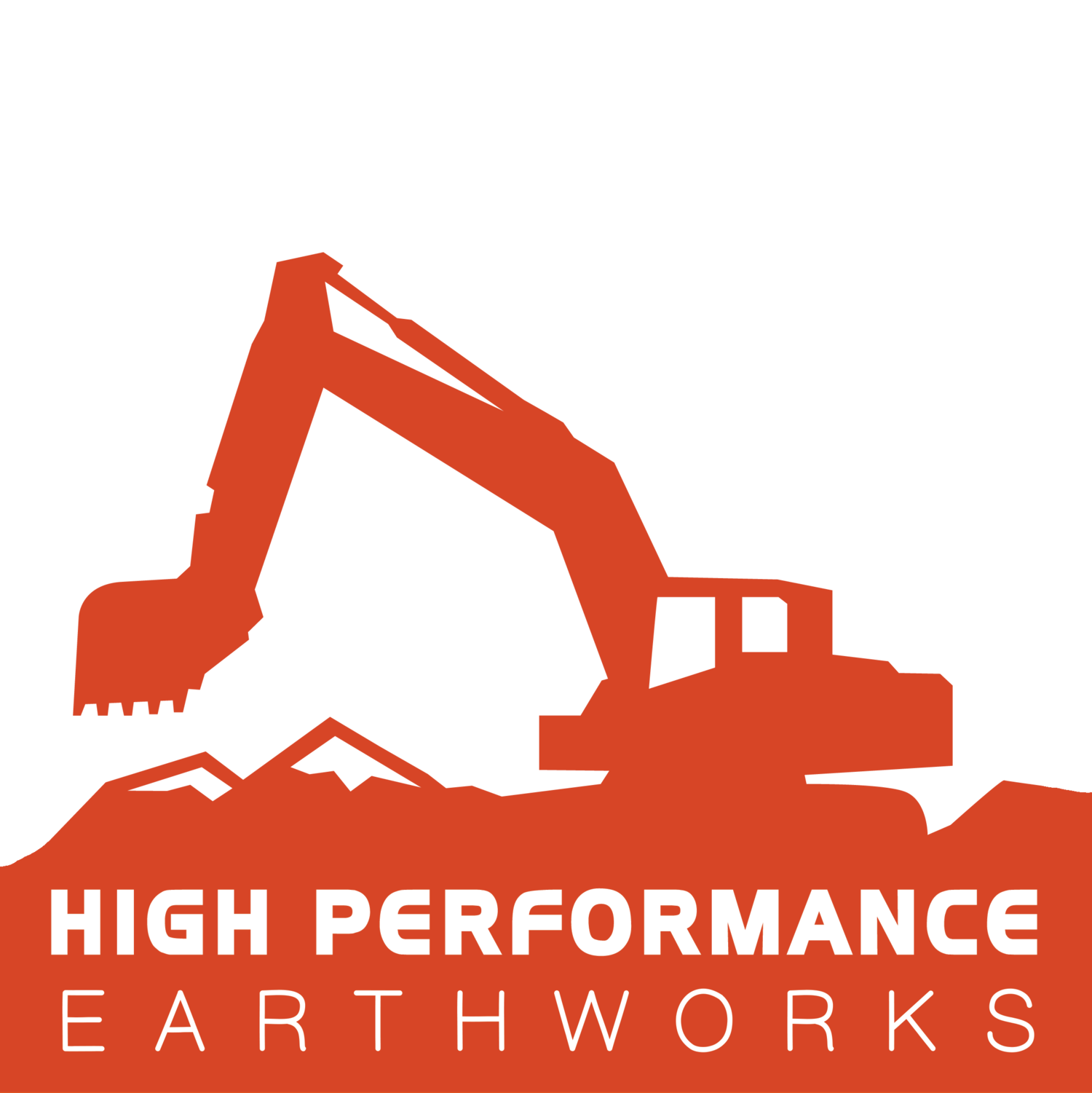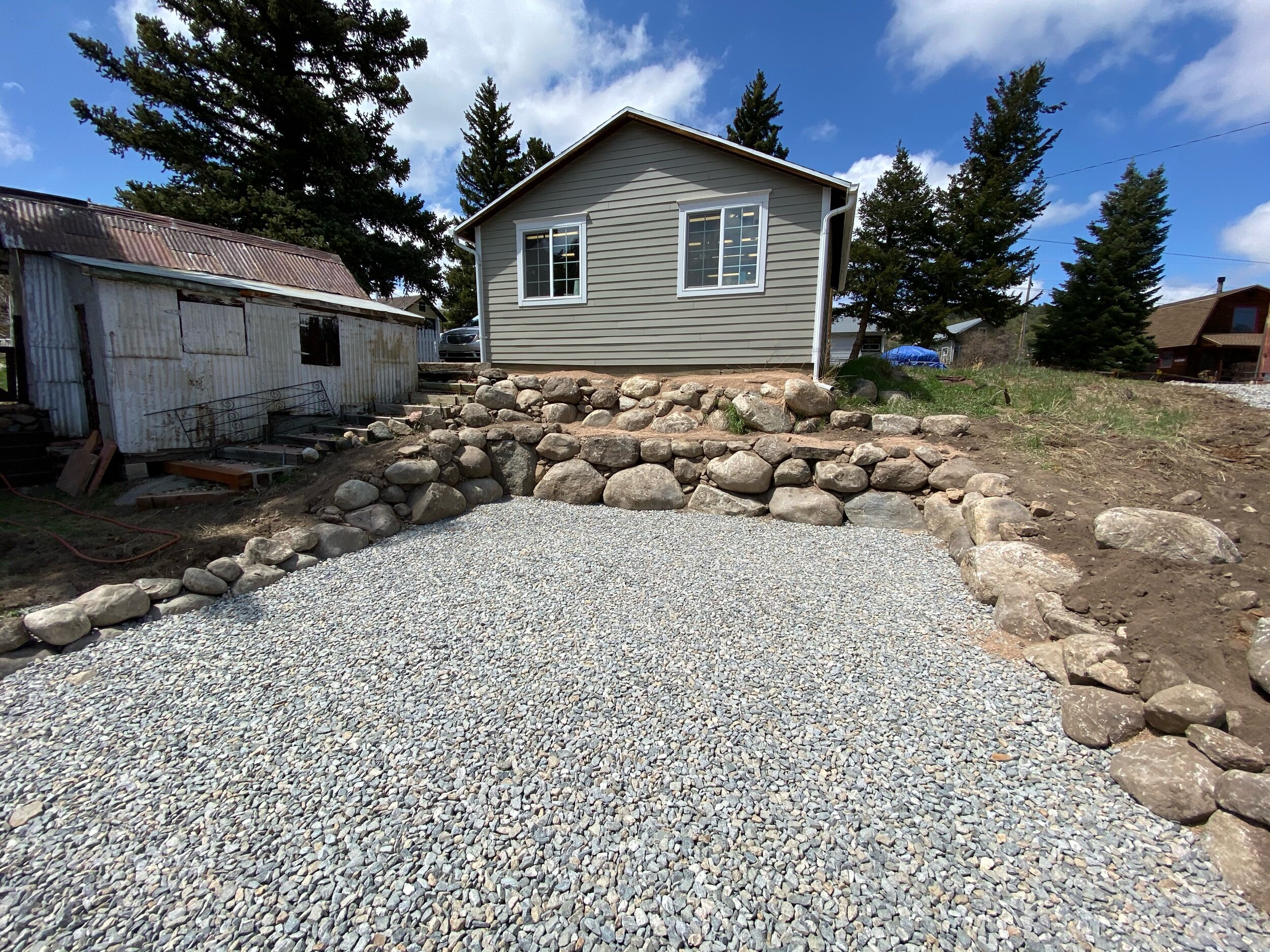• 0:00 - 0:10 All right, so I'm just gonna point out some of the things that we look for that. I look for in rock walls. This is The Cutting Edge of my understanding at the moment is first of all. • 0:11 - 0:40 So a few things you want the bottom of the first course to be underground slightly. So 6 to 8 inches is pretty good. Also, you want to have your biggest rocks on the bottom. So your first course, that's your your most necessary spot for stability that rock in the corner is really big. It's a lot bigger. It actually goes back into the hillside on the left there. Then other things that you wanted to kind of look for for just looking good, you know, the two things that are. • 0:41 - 1:10 We'll need to do is hold the Earth back and look good and probably holding the Earth back is the most important and then secondarily is nicer it looks better. So what you're looking for when you're looking for good looks is basically some nice level lines at the top of your Terrace and you know selecting your rocks carefully to get a as level of a line as you can without going crazy spending time chipping away these rocks. So were you know, this is production. • 1:10 - 1:40 Work but at the same time we're going as fast as we can having a be as stable as we can and having it look as good as we can and then looking good is bonus and not in my opinion. So so then as well, you know, we'd got the same kind of thing going on in the top layer. Then you also kind of want to just think about piecing your rocks together and placing them selectively to where they're going to stay put most importantly and then that they they look like they make sense. • 1:41 - 2:10 Fit also, typically you want to have your the length of your rock going back into the hillside as opposed to going along the face like that. So whenever possible, you know that I don't remember what that rock was. Hopefully it was kind of triangular and it's going back in because the Temptation is always to go for more square footage faster, but you always want to err on the side of stability then also you get really got to think about drainage, you know drainage is the one thing that's going to really cause these rocks to push out at the height. Hi. • 2:10 - 2:40 Agile hydrology Hydro hydraulic loading on the backside of these rocks. I just learned from an engineer. Basically. It's the the water actually is really heavy and it's a lot heavier than the air voids that is naturally occurring in dirt. So it makes the the dirt much heavier and it wants to push that rock out and it also liquefies the dirt so that it's actually wanting to push down and you know squeeze into the cracks and basically present a more you. • 2:40 - 2:44 Uniform and steady pressure on the back side of that rock wanting to push it out of the wall. • 2:46 - 3:15 So drainage is key. And we basically we showed the images of the drainpipe that we got going all the way around this thing and coming out and hanging out on both sides here where it gets shallow, and then we got gravel and squeegee underneath that dirt right there. So that this all drains out real nice and then we have this this drainpipe and we did this little section here to to kind of expand this out and give this this all a little more room. • 3:15 - 3:22 This used to be just the hill that would go down like that. And so the first little section that we did is this this wall here. • 3:24 - 3:53 And then this needs a little bit more dirt a little more fill customer said he's going to go ahead and take care of that. Just kind of Rick in some of this stuff and smooth this out where it's a little uneven that's where we put the boulders and I didn't clean that up yet. I got a little pile of rocks. They're just kind of hanging out ready for the customer to find a nice little happy home for for those guys. And then we're this is all getting a slab Edge a family Reiki on Instagram is going to come in here and. • 3:54 - 4:24 Give this the final slab and he's gonna float the concrete. It's going to be about a 4-inch slab. He's gonna float the concrete right into the edge of those Boulders. So it's going to look real nice and those Boulders are going to stay there forever. And then it'll come out this way draining at about 1 & a half percent right now. We have a two percent slope on here, but we'll probably edges probably gonna pitch. It adds a one to one and a half if he does. • 4:24 - 4:54 One percent pitch he's gonna have two inches. No, is it one inch right now? We have four. Yeah. It needs to have pennies make up two inches of thickness down here on this end with his lab. It'll be 2 inches thicker up here than it is back there. That's what he'd have to do in order to raise this up and get that one percent perfect pitch out of this thing. So we'll see what he does. He could do a two percent pitch on it. It's not the end of the world, but this is all plate compactor. • 4:54 - 5:00 Did and worked in there right along up nice to the edge of the rocks. • 5:01 - 5:31 I'm really proud of this thing. I really love it. I really enjoyed this is got to be what I enjoy most out of all the earth work that we do. I love stabilizing the hillsides with stones and boulders and I definitely want to get into doing some River work well as well restoring the Riverbanks that looks like really fun work and I would love to get some contracts like that. This is also nice rock work that got done before we got here. • 5:32 - 5:33 We did that too.

